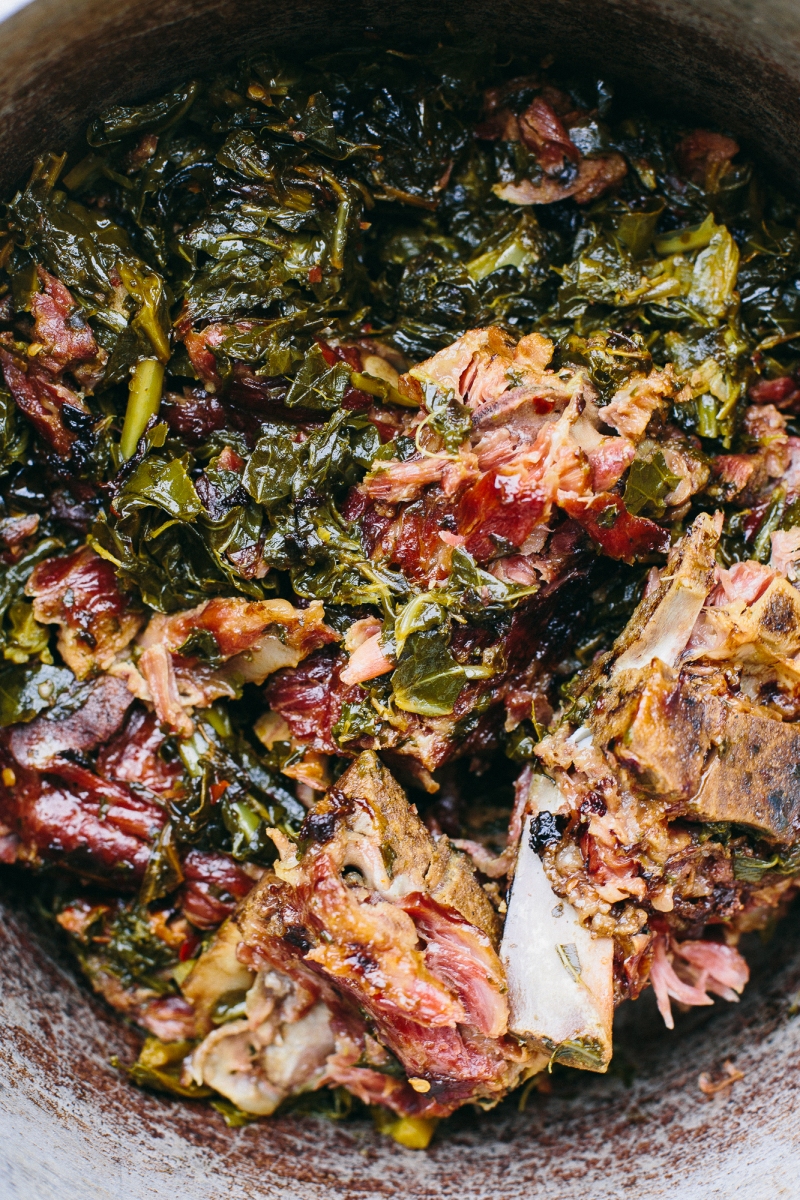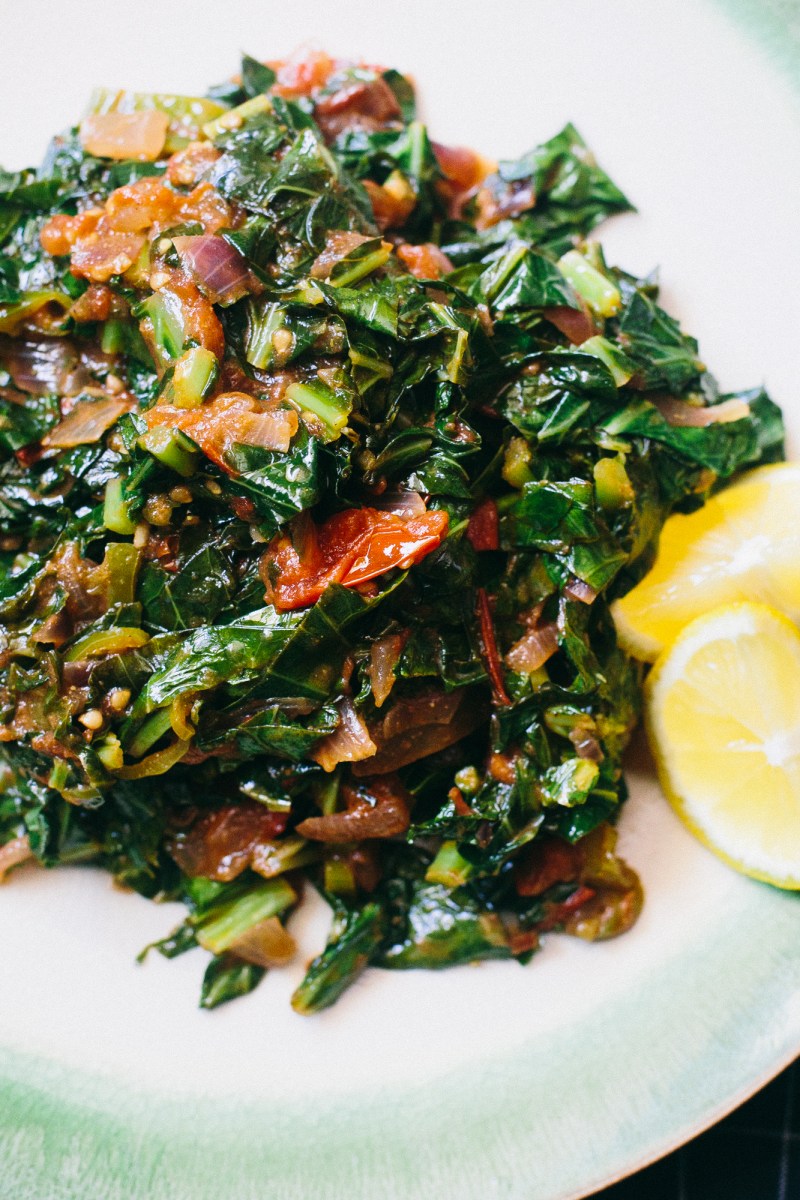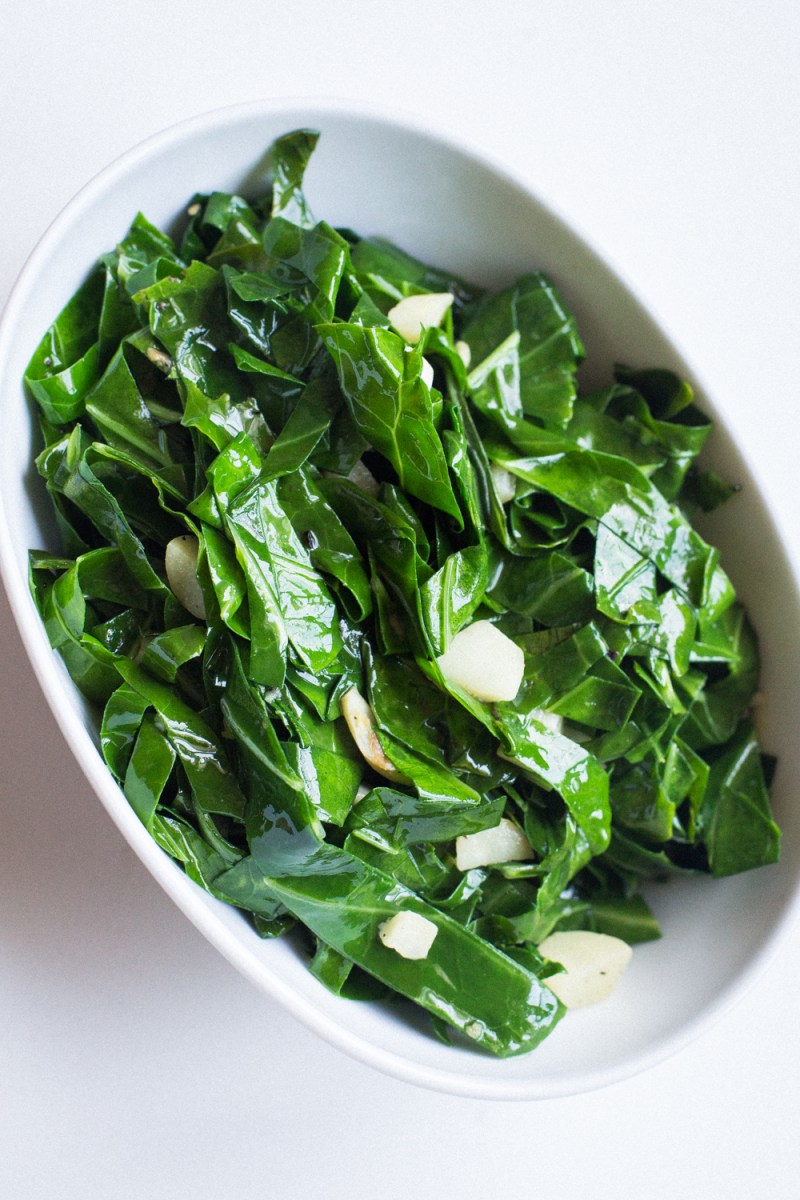
Every time I make a pot of these greens, it feels like cheating. I make them pretty often for potlucks and gatherings, and everyone always wants to know “my secret”, as if there is some special, sneaky method to make this dish work. The truth is I simply make the dish as it had been made throughout history – with smoked, lesser cuts like ham hocks or neck bones, some liquid, and a bit of cider vinegar – and let the flavors develop on their own time. But I think that in today’s age of canned greens, crock-pot greens, or greens made with bacon (the worst!), people’s expectations of how greens taste have changed. Instead of knowing how greens should taste, we’ve become content with how they typically taste. I think of it like how a quality, handmade cheeseburger runs laps around a Big Mac.
So this week’s recipe will definitely be making it into my upcoming cookbook, and only slightly tweaked from when I first published it in The Ancestral Table, because not much has changed when it comes to these classic flavors. Many recipes you find will insist you add sugar to the greens, to take away some of the bitterness of the greens, or the tanginess of the vinegar, and I disagree; since greens are typically part of a whole meal, I let the other dishes complement the sharp flavor of the greens – that way you’re encouraged to have a little greens with every bite. Our favorite accompaniments to these greens are something with a crunch texture, like Seasoned Southern Fried Chicken, and something with a mild flavor, like Mashed Potatoes.
Here’s my writeup from The Ancestral Table: Greens were popular in the early American South when slaves were forced to survive on kitchen scraps like the tops of vegetables and undesirable pork parts, like ham hocks, necks, and feet. Today, the dish has been refined and remains a favorite in many Southern kitchens. In fact, collard greens are the state vegetable of South Carolina.
This recipe is unlike many typical greens recipes, which often add pork or bacon pieces in small portions or as an afterthought; this dish celebrates the savory nature of pork by using both broth and a significant amount of pork. If you aren’t able to find smoked ham hocks or neck bones, unsmoked varieties will do—just be sure to add 2 tsp. liquid smoke when adding the greens to the pot. Alternatively, you can buy smoked turkey necks or smoked turkey wings.
Read Full Article




